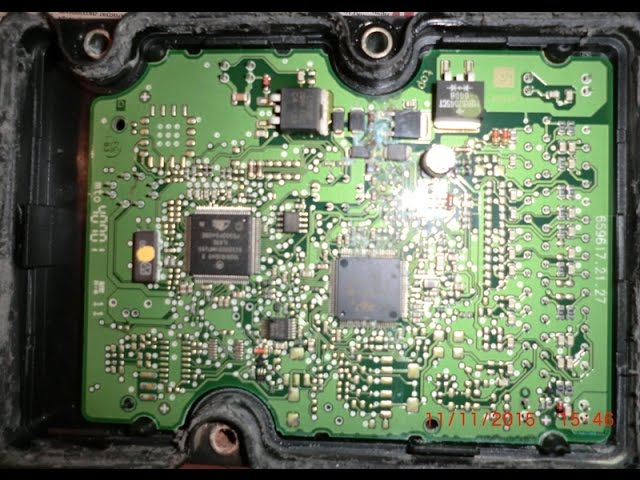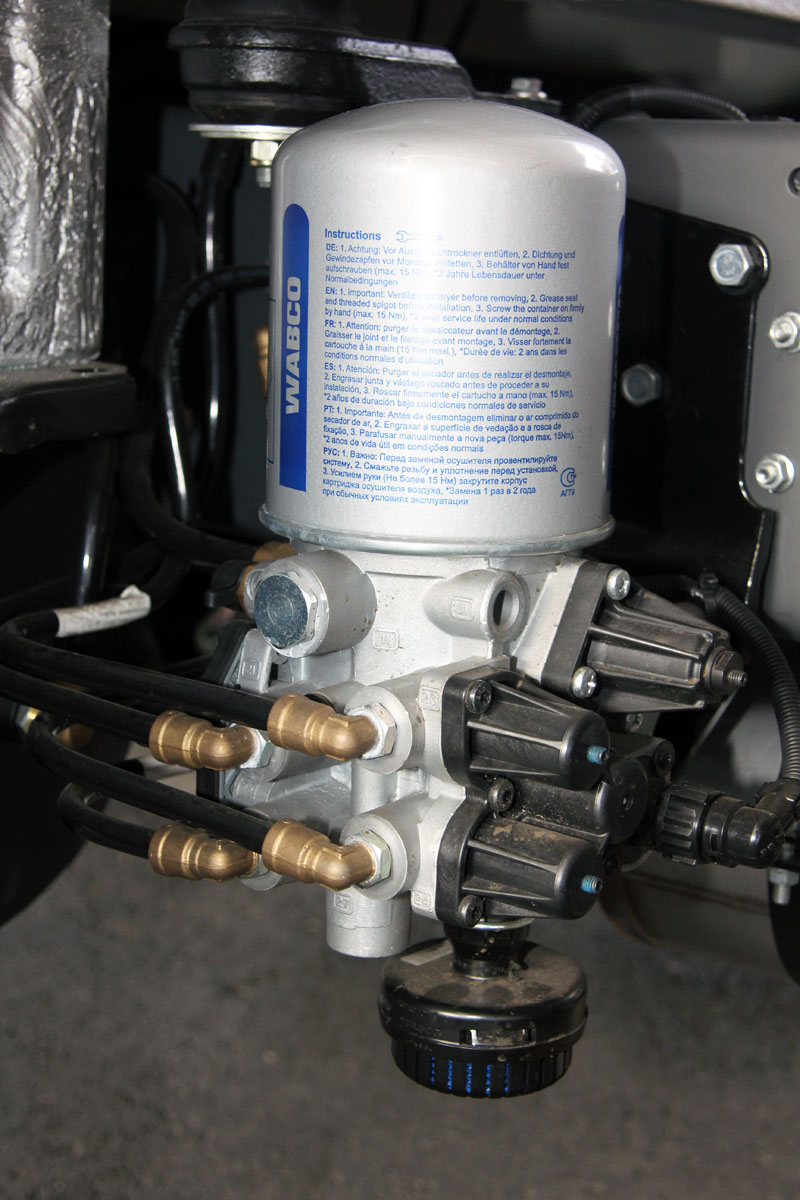
How to replace the ABS control module
Content
The ABS module can be a tricky part to replace depending on the manufacturer's design. You may need to reprogram and bleed the system if necessary.
The ABS module actually consists of three components: an electrical module with electrical solenoids, a brake line assembly, and a pump motor that pressurizes the brake lines, which is used during ABS braking.
Replacing an ABS module can be a complex procedure. This module is a menacing looking device with warnings displayed all over the place. Brake lines are high pressure to watch out for if you find you need to remove them.
- Attention: Not all ABS modules require removal of the brake lines. It depends on the manufacturer of the car you are working on. With the exception of removing the brake lines, the procedures for replacing the ABS module are almost the same.
The ABS module will need to be programmed after everything is installed. This procedure will also vary slightly depending on the manufacturer.
- Functions: For this step of the ABS module replacement procedure, refer to the manufacturer's instructions to find the specific programming procedure.
Sometimes the module is replaced with the solenoid pack, sometimes not. It depends on the design and location of the ABS unit, which depends on the manufacturer's design, assembly choice, and how the replacement module is sold.
Part 1 of 6: Locate the ABS Module
Necessary materials
- Line keys
- ratchet
- Sweep tool
- Socket set
- ratchet
Step 1: Refer to your specific repair manual to locate the ABS module.. Usually in the repair manual there is a picture with an arrow indicating the place where the module is installed.
Sometimes there will also be a written description which can be very helpful.
- Functions: Many metal brake lines are connected to the ABS module. The module itself is bolted to the solenoid block and will need to be separated from it. This is not always the case as some manufacturers require the module and solenoid pack to be replaced at the same time.
Step 2: Locate and identify the module on the vehicle. You may need to lift the car and remove some plastic covers, panels or other components to find the ABS module.
- Attention: Be aware that the ABS module will be bolted to the solenoid box that has multiple brake lines connected to it.
Part 2 of 6: Determine how to remove the ABS unit from the car
Step 1. See manufacturer's repair instructions.. You may be able to remove the ABS module from the vehicle as a whole, or remove just the electrical module while the solenoid box remains attached to the vehicle.
- FunctionsNote: On some vehicles, it is possible to remove the module from the solenoid box while the solenoid box is still attached to the vehicle. For other vehicles, the two components may need to be replaced as a whole. It depends on how well you can access it and how the new module is being marketed.
Step 2: Go to Part 3 or Part 4.. Skip to Part 4 if you only need to remove the module, not the solenoid box and motor. If the ABS module, solenoid box and engine will be removed as a unit, go to part 3.
Part 3 of 6. Remove the module and solenoid assembly as a unit.
Step 1: Relieve brake line pressure. In some vehicles, there may be high pressure in the ABS unit. If this applies to your vehicle, refer to your vehicle's specific repair manual for proper line pressure relief methods.
Step 2: Disconnect the electrical connector from the module. The connector will be large and will have a locking mechanism.
Each manufacturer uses different mechanisms to hold connectors.
- Functions: Be sure to mark the lines before deleting them to make sure you can reconnect them in their original positions.
Step 3: Remove the brake lines from the module. You will need an appropriately sized wrench to remove the lines without rounding them.
After you have completely disconnected all the lines from the block, pull on them to remove them.
Step 4: Remove the ABS module with solenoid assembly.. Remove any bracket or bolts used to secure the ABS module and solenoid box to the vehicle.
This configuration will greatly depend on the make and model of the vehicle you are working on.
Step 5: Remove the ABS module from the solenoid block.. Remove the bolts that secure the module to the solenoid box. Gently pry the module away from the block.
This may require a flat head screwdriver. Be sure to be gentle and patient.
- AttentionNote: Removing the module from the solenoid block is not always necessary as it depends on how the new block is shipped to you. Sometimes it is sold as a kit with a block of solenoids, a module and a motor. Otherwise, it will just be a module.
Step 6: Go to Part 6. Skip Part 4 as it is about replacing the module without removing the solenoid box and brake lines.
Part 4 of 6: Remove only the module
Step 1: Disconnect the electrical connector from the module. The connector will be large and will have a locking mechanism.
Each manufacturer uses different mechanisms to hold this connector.
Step 2: Remove the module. Remove the bolts that secure the module to the solenoid box. Gently pry the module away from the block.
This may require a flat head screwdriver. Be sure to be gentle and patient.
Part 5 of 6: Install the new ABS module
Step 1: Install the module on the solenoid block.. Carefully point the module at the solenoid block.
Don't force it, if it doesn't slide smoothly, take it off and take a close look at what's going on.
Step 2: Start hand tightening the bolts. Before tightening any of the bolts, begin to tighten them by hand. Make sure they fit snugly before applying the final torque.
Step 3: Connect the electrical connector. Insert electrical connector. Use the locking mechanism to firmly attach and secure it to the module.
Step 4: Program the new module to the vehicle. This procedure depends on the manufacturer of your vehicle and is often not required.
Refer to your manufacturer's repair manual for programming instructions for this module.
Part 6 of 6: Installing the ABS unit on the car
Step 1: Install the module into the solenoid block.. This step is only necessary if the new module is shipped separately from the solenoid box.
Step 2: Install the ABS unit on the vehicle.. If necessary, screw the unit to the vehicle.
Be sure to pay attention to the alignment of the brake lines.
Step 3: Thread the Brake Lines. Cross-threaded brake lines are a very real possibility that can lead to serious problems.
Be sure to manually start each brake line carefully before using a wrench or applying final torque.
Step 4: Tighten all brake lines. Make sure all brake lines are tight and the flared end is secure when you tighten the brake lines. Sometimes this can be a problem. If so, you will need to remove the leaking brake line and take a close look at the flared end.
Step 5: Connect the electrical connector. Insert electrical connector. Use the locking mechanism to firmly attach and secure it to the module.
Step 6: Program the new module to the vehicle. This procedure will depend on your vehicle manufacturer and is often not necessary.
You will need to consult your manufacturer's repair manual to find instructions for this process.
Step 7: Bleed the brake lines. In most cases, you can bleed the brake lines on the wheels.
Some vehicles will have complex bleeding procedures that will need to be followed. Consult your manufacturer's repair manual for specific instructions.
Replacing an ABS module is a repair of many kinds, on some vehicles it can be very simple and straightforward, while on others it can be difficult and complex. Difficulties may arise during vehicle programming, bleeding procedures or installation in cases where it is necessary to remove all brake lines.
Sometimes the module is installed in places that require the removal of other components to access the ABS unit. Since the brake systems extend from the front to the rear of the vehicle and on both sides, the ABS unit can be installed almost anywhere in the vehicle. If you are lucky, it will be easily accessible and you will only need to replace the electrical part of the ABS unit instead of doing extensive disassembly, programming and bleeding.
If your ABS light is on, you should always start with a thorough diagnosis of the ABS system before replacing the ABS unit, as ABS modules are expensive and complex. Invite a certified AvtoTachki specialist to check and diagnose the problem.
